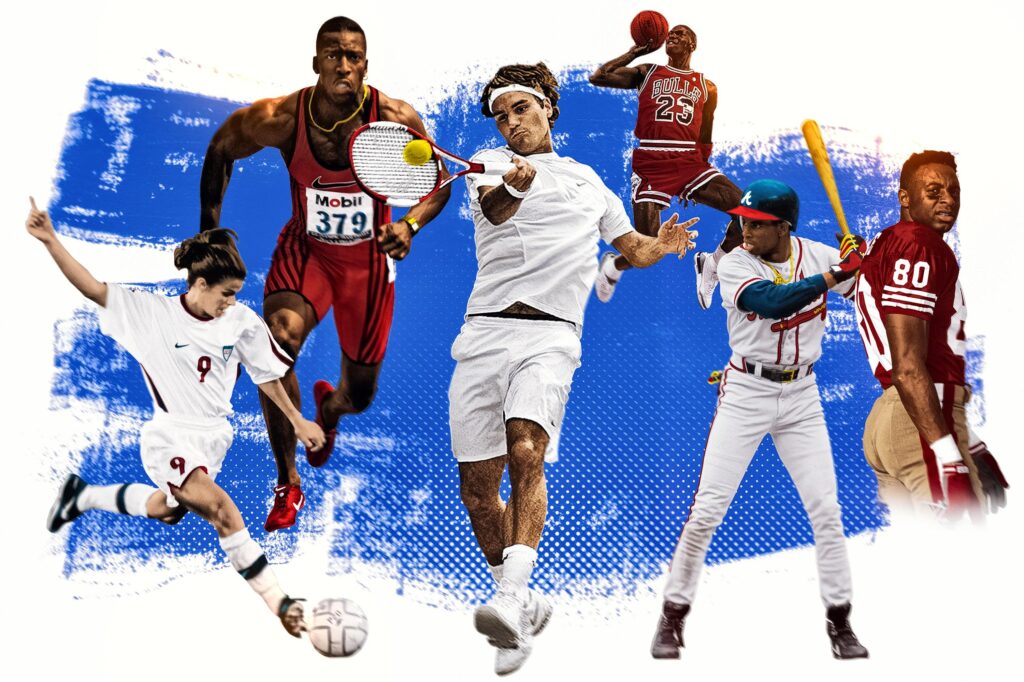At TED2014, science writer David Epstein delivered a compelling exploration into the evolving world of athletic performance, shedding light on the factors driving athletes to become faster, better, and stronger than ever before. Drawing on cutting-edge research and surprising case studies, Epstein dissected the roles of genetics, training, and technology in shaping modern sports excellence. His talk not only challenged conventional wisdom but also sparked a wider conversation about what truly propels human potential in competitive athletics.
The Science Behind Athletic Performance Gains
Advancements in athletic performance aren’t simply about harder training; they are deeply rooted in a sophisticated understanding of human biology, genetics, and technology. Recent research highlights how tailored workouts, nutrition optimization, and recovery science converge to unlock new levels of speed, strength, and endurance. Scientists emphasize the significance of muscle fiber composition, hormonal balance, and neural efficiency as critical drivers behind an athlete’s progress. This multidimensional approach challenges the old paradigm of “just train more,” showing that smarter strategies can yield faster and more sustainable results.
Moreover, the role of data analytics and wearable technology has revolutionized how performance is tracked and enhanced. Coaches and athletes now rely on real-time feedback to fine-tune every aspect of training. Consider the following key factors fueling these gains:
- Precise biomechanical analysis to improve technique
- Genetic testing to tailor nutrition and recovery plans
- High-altitude and hypoxic training environments
- Advanced supplementation based on metabolic profiling
| Factor | Impact on Performance | Example |
|---|---|---|
| Muscle Fiber Type | Enhances speed or endurance | Sprinters vs. marathoners |
| Neural Efficiency | Improves coordination and power output | Explosive start in cycling |
| Recovery Tech | Reduces injury, enables longer training | Cryotherapy and compression gear |
Unlocking Genetic Potential in Sports
Exploring the intricate connection between genetics and athletic performance, recent studies reveal that nature and nurture blend more seamlessly than previously assumed. David Epstein’s deep dive into elite sports challenges the notion that only rigorous training and determination dictate success. Instead, a complex web of *inherited physical traits* – from fast-twitch muscle fibers to lung capacity – sets the stage for athletes to push boundaries. This genetic groundwork often determines who can accelerate faster, endure longer, and recover quicker, forming an invisible edge that goes beyond practice hours.
The unlocking of this genetic code is reshaping talent identification and development. Coaches and scientists now emphasize a multifaceted approach, including
- genetic screening to pinpoint potential
- customized training regimes tailored to unique physiological advantages
- nutrition strategies aligned with inherited metabolic profiles
Such innovations are not just enhancing the peak performance of individuals but redefining what is possible in sports across disciplines. Below is a snapshot comparing two typical genetic markers influential in sprint and endurance athletes:
| Genetic Marker | Sprinters | Endurance Athletes |
|---|---|---|
| ACTN3 Gene (Fast-twitch muscle) | High expression | Low expression |
| PPARGC1A (Mitochondrial biogenesis) | Lower activity | Higher activity |
Innovations Driving Training and Recovery
Recent breakthroughs in sports science are transforming not only how athletes train but also how they bounce back from injuries. Cutting-edge tools like biomechanical sensors and AI-driven analytics are enabling coaches to create hyper-personalized programs that optimize performance while minimizing overexertion. Coupled with advances in wearable technology, athletes now have real-time feedback on everything from muscle fatigue to hydration levels, allowing for smarter, data-backed decisions during training sessions.
Recovery technologies are also evolving at a remarkable pace. Innovations such as cryotherapy chambers, infrared light therapy, and neuromuscular electrical stimulation are proving vital in accelerating healing processes and reducing downtime between workouts. Below is a snapshot of some popular recovery methods and their core benefits:
| Recovery Method | Primary Benefit | Ideal Use Case |
|---|---|---|
| Cryotherapy | Reduces inflammation | Post-intensive training |
| Infrared Light | Enhances tissue repair | Chronic muscle soreness |
| Electrical Stimulation | Improves muscle activation | Rehabilitation phases |
Practical Strategies for Athletes and Coaches
To truly enhance athletic performance, it’s essential for both athletes and coaches to embrace a tailored approach that respects individual differences in physiology, psychology, and skill sets. Rather than relying solely on generic training regimens, personalized programs can unlock an athlete’s unique potential. For example, assessing an athlete’s genetic predispositions and recovery patterns allows for optimizing workout intensity and frequency, minimizing the risk of injury while maximizing gains. Incorporating cross-disciplinary training-such as combining strength conditioning with agility drills and mental resilience techniques-fosters a more holistic development.
Key methods to accelerate improvement include:
- Dynamic periodization: Adjusting training phases based on ongoing performance data rather than static schedules.
- Data-driven feedback loops: Utilizing wearable tech to monitor metrics such as heart rate variability and fatigue levels in real time.
- Mental skills coaching: Building cognitive strategies for focus, stress management, and goal setting.
- Nutrition timing: Aligning meals and supplements with training phases to optimize energy availability and recovery.
| Strategy | Benefit | Implementation |
|---|---|---|
| Dynamic Periodization | Maximizes adaptation | Weekly training adjustments |
| Wearable Tech Monitoring | Prevents overtraining | Daily biometrics tracking |
| Mental Skills Coaching | Enhances focus | Visualization & mindfulness sessions |
| Nutrition Timing | Improves recovery | Pre- and post-workout fueling |
Insights and Conclusions
As David Epstein’s TED Talk highlights, the quest to push human athletic limits is a complex interplay of genetics, training, technology, and environment. From emerging scientific insights to innovative coaching methods, the factors driving athletes to become faster, better, and stronger continue to evolve. Understanding these elements not only reshapes how we view athletic potential but also sparks ongoing conversations about fairness, opportunity, and the future of sports. Epstein’s examination reminds us that beneath every record-breaking performance lies a multifaceted story of human capability and perseverance.





